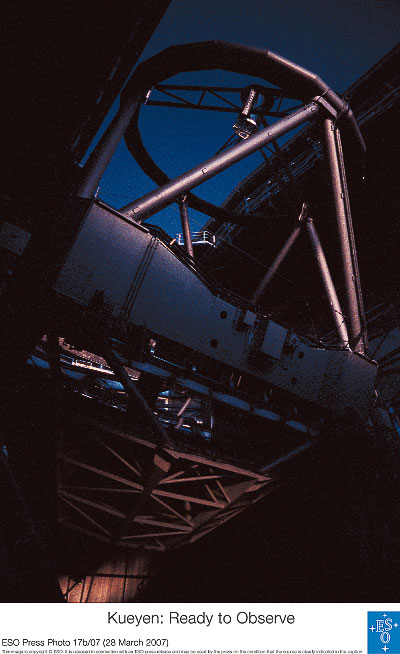Gamma ray bursts (GRBs), the brief flashes of light signalling distant, extremely energetic events, have been elusive targets for astronomical observation. (It's something like the fairground game of Whack-a-Mole:by the time you're aware of the GRB, it's vanished, and you have no way of knowing where the next one will appear.) An orbiting observatory that quickly alerts ground-based astronomers about GRBs has allowed a very quick response and an unprecedented look at the GRBs' aftermath.
GRBs are the most energetic and among the most enigmatic events that we see happening in the universe. These outbursts of high-energy radiation appear unpredictably and then vanish quickly, leaving a faint and fast-fading afterglow at visible wavelengths. They're believed to occur in some circumstances when a black hole forms, through some dramatic and distant event like the explosion of a massive star or the collision of neutron stars, but until recently it's been hard to learn more about them because they occur so unpredictably and are over so quickly.

The Swift satellite has been instrumental in alerting astronomers to these elusive flashes so that ground-based and space-based telescopes can respond quickly and examine the location of a GRB. Swift scans the sky for GRBs; when it spots one, it relays information to the ground about the location. In fact, at the European Southern Observatory (ESO), data from Swift can trigger robotic observations with the Very Large Telescope (VLT) that allows for a very quick response to a GRB. Last year the VLT observed the site of two GRBs within ten minutes of the initial flash, a record for speedy followup. The VLT looked at spectra in the visual and ultraviolet parts of the spectrum. This press release from the ESO describes the resulting analysis for one of the GRBs. The spectra provided information about a large gas cloud in the vicinity of the GRB, which, surprisingly, was not as close to the GRB site as predicted. Future observations may reveal whether this is an anomalous feature of that particular GRB, or if the idea that the visible features are close to the explosion site will need to be re-examined.
By the way, the AstroCapella group has produced a very nifty song about Swift. The link will take you to a page with the lyrics and a link where you can listen to the song online.
This was just too cool so we embedded the .mp3 so people could listen (but you should still go to their site and say hello!) - admin





Comments